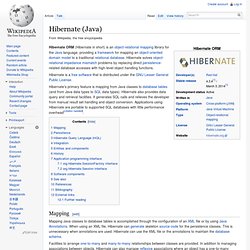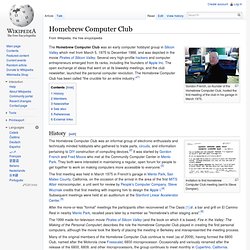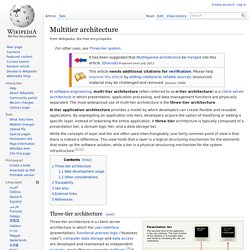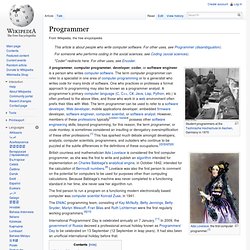

Ajay Gopinathan. Code cleaner - Open Source Code Search Engine - Black Duck Koders. Code cleaner - prettyprinter.de - PrettyPrinter. Development Tool Suite for Enterprise Java. The Spring Tool Suite is an Eclipse-based development environment that is customized for developing Spring applications.

It provides a ready-to-use environment to implement, debug, run, and deploy your Spring applications, including integrations for Pivotal tc Server, Pivotal Cloud Foundry, Git, Maven, AspectJ, and comes on top of the latest Eclipse releases. Included with the Spring Tool Suite is the developer edition of Pivotal tc Server, the drop-in replacement for Apache Tomcat that's optimized for Spring. With its Spring Insight console, tc Server Developer Edition provides a graphical real-time view of application performance metrics that lets developers identify and diagnose problems from their desktops. The Spring Tool suite supports application targeting to local, virtual and cloud-based servers.
It is freely available for development and internal business operations use with no time limits, fully open-source and licensed under the terms of the Eclipse Public License. Foglio. Hibernate (Java) Hibernate is a free software that is distributed under the GNU Lesser General Public License.

Mapping Java classes to database tables is accomplished through the configuration of an XML file or by using Java Annotations. When using an XML file, Hibernate can generate skeleton source code for the persistence classes. This is unnecessary when annotations are used. Hibernate can use the XML file or the annotations to maintain the database schema. Hibernate supports the mapping of custom value types. Homebrew Computer Club. Gordon French, co-founder of the Homebrew Computer Club, hosted the first meeting of the club in his garage in March 1975.

History[edit] Invitation to first Homebrew Computer Club meeting (sent to Steve Dompier). The first meeting was held in March 1975 in French's garage in Menlo Park, San Mateo County, California, on the occasion of the arrival in the area of the first MITS Altair microcomputer, a unit sent for review by People's Computer Company. Steve Wozniak credits that first meeting with inspiring him to design the Apple I.[4] Subsequent meetings were held at an auditorium at the Stanford Linear Accelerator Center.[5] After the more-or-less "formal" meetings the participants often reconvened at The Oasis [1], a bar and grill on El Camino Real in nearby Menlo Park, recalled years later by a member as "Homebrew's other staging area".[6]
How to Think Like a Computer Scientist. Learning with Python by Allen Downey, Jeff Elkner and Chris Meyers.

This book is now available for sale at Lulu.com. Hardcopies are no longer available from Green Tea Press. How to Think... is an introduction to programming using Python, one of the best languages for beginners. How to Think Like a Computer Scientist. How to Think Like a Computer Scientist. Learning Perl the Hard Way. By Allen B.

Downey. Download this book in PDF. Read other books from Green Tea Press. Do we really need another Perl book? Well obviously I think so, and here's why: I want a book for people who already know how to program in another language, but don't know Perl. This book is a work in progress. Learning Perl the Hard Way is a free book available under the GNU Free Documentation License.
Printable versions of the book are available in PDF and gzipped Postscript. Multitier architecture. In software engineering, multi-tier architecture (often referred to as n-tier architecture) is a client–server architecture in which presentation, application processing, and data management functions are physically separated.

The most widespread use of multi-tier architecture is the three-tier architecture. N-tier application architecture provides a model by which developers can create flexible and reusable applications. By segregating an application into tiers, developers acquire the option of modifying or adding a specific layer, instead of reworking the entire application. A three-tier architecture is typically composed of a presentation tier, a domain logic tier, and a data storage tier. While the concepts of layer and tier are often used interchangeably, one fairly common point of view is that there is indeed a difference. No Starch Press. Programmer. British countess and mathematician Ada Lovelace is considered the first computer programmer, as she was the first to write and publish an algorithm intended for implementation on Charles Babbage's analytical engine, in October 1842, intended for the calculation of Bernoulli numbers.[8] Lovelace was also the first person to comment on the potential for computers to be used for purposes other than computing calculations.

Because Babbage's machine was never completed to a functioning standard in her time, she never saw her algorithm run. The first person to run a program on a functioning modern electronically based computer was computer scientist Konrad Zuse, in 1941. The ENIAC programming team, consisting of Kay McNulty, Betty Jennings, Betty Snyder, Marlyn Wescoff, Fran Bilas and Ruth Lichterman were the first regularly working programmers.[9][10] Nature of the work[edit] Programmers in the Yandex headquarters. Testing and debugging[edit] Application versus system programming[edit]
Secure source code hosting and collaborative development - GitHub. Software analyst. Software architect. Software architect is a computer manager who makes high-level design choices and dictates technical standards, including software coding standards, tools, and platforms.

History[edit] With the popularity of multi-tier application development, the choices of how an application can be built have also increased. Given that expansion, the risk that a software development project may inadvertently create a "new" end product that, in essence, already existed has grown markedly. A new 'software architect' role has become necessary during software development. [citation needed] The software architect concept began to take hold when object-oriented programming (OOP) was coming into more widespread use (in the late 1990s and early years of the 21st century). Software developer. A software developer is a person concerned with facets of the software development process.

Their work includes researching, designing, implementing, and testing software.[1] A software developer may take part in design, computer programming, or software project management. They may contribute to the overview of the project on the application level rather than component-level or individual programming tasks. Software developers are often still guided by lead programmers but the description also encompasses freelance software developers. Description[edit] Software engineer. A software engineer programming for the Wikimedia Foundation Software engineers apply the principles of engineering to the design, development, maintenance, testing, and evaluation of the software and systems that make computers or anything containing software work.

Typical formal definitions of software engineering are: "the application of a systematic, disciplined, quantifiable approach to the development, operation, and maintenance of software".[1]"an engineering discipline that is concerned with all aspects of software production"[2]"the establishment and use of sound engineering principles in order to economically obtain software that is reliable and works efficiently on real machines"[3] Software engineer. A software engineer programming for the Wikimedia Foundation Software engineers apply the principles of engineering to the design, development, maintenance, testing, and evaluation of the software and systems that make computers or anything containing software work.
Typical formal definitions of software engineering are: "the application of a systematic, disciplined, quantifiable approach to the development, operation, and maintenance of software".[1]"an engineering discipline that is concerned with all aspects of software production"[2]"the establishment and use of sound engineering principles in order to economically obtain software that is reliable and works efficiently on real machines"[3] The term has been used less formally: Overview[edit]
Spring (operating system) Spring Research Distribution 1.0 CD cover Spring started in a roundabout fashion in 1987, as part of Sun and AT&T's collaboration to create a merged UNIX, both companies decided it was also a good opportunity to "reimplement UNIX in an object-oriented fashion".[1] However, after only a few meetings, this part of the project died. Sun decided to keep their team together and instead explore a system on the leading edge. In addition to combining Unix flavours, the new system would also be able to run just about any other system as well, and do so in a distributed fashion.
The system was first running in a "complete" fashion in 1993, and produced a series of research papers. In 1994 a "research quality" release was made under a non-commercial license, but it is unclear how widely this was used. Spring Framework. The Spring Framework is an open source application framework and inversion of control container for the Java platform. The framework's core features can be used by any Java application, but there are extensions for building web applications on top of the Java EE platform. Although the framework does not impose any specific programming model, it has become popular in the Java community as an alternative to, replacement for, or even addition to the Enterprise JavaBean (EJB) model. Version history[edit] Modules[edit] The Spring Framework includes several modules that provide range of services:
SpringSource.org. Systems analyst. A systems analyst researches problems, plans solutions, recommends software and systems, at least at the functional level, and coordinates development to meet business or other requirements. Although they may be familiar with a variety of programming languages, operating systems, and computer hardware platforms, they do not normally involve themselves in the actual hardware or software development. Because they often write user requests into technical specifications, the systems analysts are the liaisons between vendors and information technology professionals.[1] They may be responsible for developing cost analysis, design considerations, staff impact amelioration, and implementation time-lines.
A systems analyst may: The system development life cycle (SDLC) is the traditional system development method that organizations use for large-scale IT Projects. The SDLC is a structured framework that consists of sequential processes by which information system are developed. The Little Book of Semaphores. Allen B. Downey. Think Python: How to Think Like a Computer Scientist. How to Think Like a Computer Scientist by Allen B. Downey. ThreatExpert - Automated Threat Analysis.
USENIX: The Advanced Computing Systems Association.